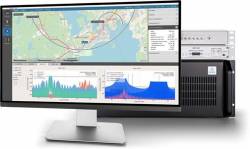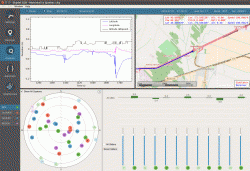The upcoming GPS Week Number Rollover (WNRO) on April 6 is bringing a lot of attention not only in the specialized GNSS media, but also in the general media. The WNRO is a known feature of GPS that occurs only every roughly 20 years and thus can be anticipated and tested in a receiver using a GNSS simulator.
A less-known rollover effect is also present in the Week Number (WN) associated to the UTC Offset (UTCO) transmitted by GPS. This WN has only 8 bits, which implies a range of values from 0-255, equivalent to a rollover every roughly 5 years. A possible failure in the receiver interpretation of the UTCO WN would not have such dramatic effects as a general GPS WNRO, but it could seriously affect the output of a GPS timing receiver.
Related Reading: Schriever Air Force Base Announces Next GPS Week Number Rollover
Other than WN rollovers, un-programmed GNSS timing glitches are extremely rare but not impossible. A well-known case is the GPS anomaly of January 25-26, 2016, when around half of the satellites in the constellation transmitted an incorrect UTCO over a 12-hour duration. The transmitted value was of the order of 13 microseconds, when the correct value is usually of the order of just a few nanoseconds. This caused many timing receivers around the world to provide an incorrect timing information or to fail altogether.
Other fields in the GPS navigation message that could potentially be corrupt and cause incorrect timing output are Timing Group Delays (TGDs), and Leap Second information. In general, any event related to the contents of the GPS navigation message can be simulated by editing the associated bits in the message, for each satellite PRN. However this is a cumbersome and prone-to-error task. Orolia’s Skydel SDX simulator provides an Application Programming Interface (API) that allows it to develop SDX extensions to tackle particular simulation problems in an easy and flexible way, according to a blog post on the Skydel Solutions website. By using this API, GMV has developed a “Time Plugin” that allows to edit directly on a user interface the numerical values associated to TGDs, UTCO, and Leap Seconds, per individual satellite PRN. These values are then converted to bits in the GPS message and transmitted in the RF stream to feed the receiver under test. Events like for example the GPS anomaly of January 25-26, 2016 can be easily tested (as shown in the image above).
Ricardo Píriz, from Skydel’s partner GMV, developed the SDX plugin that automates the testing of timing errors for GNSS. He contributed in the blog details about other timing errors (on top of the WN) that could affect GNSS receivers, and that should be tested.






